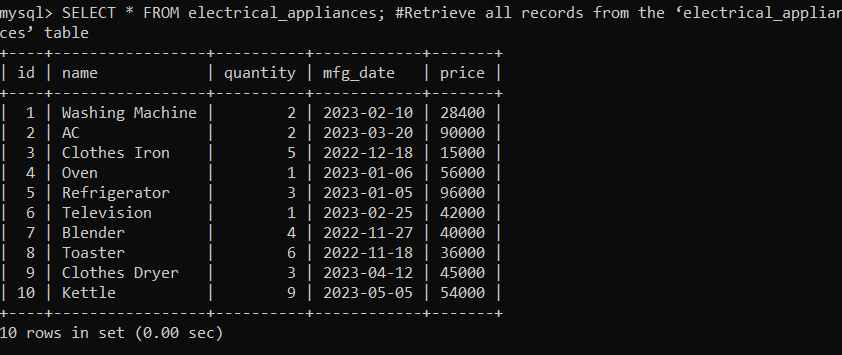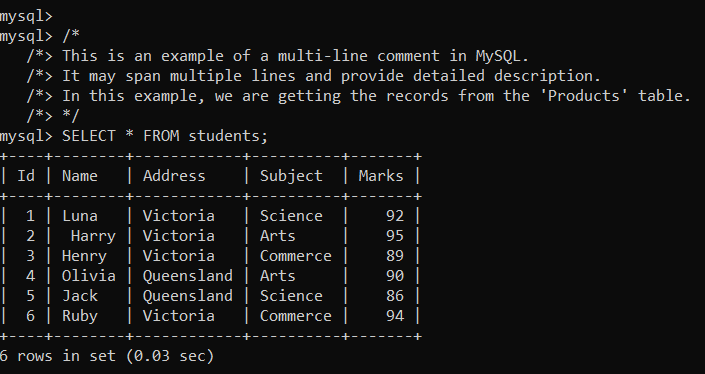How to Comment in MySQLIn MySQL, a comment is a text that is added to the SQL code to provide extra information about the code. Comments are not executed in MySQL; instead, comments are ignored by the MySQL server. They are like documentation inside the code, which makes it simple for developers to understand the logic behind the SQL statements. Types of comments in MySQL:There are two kinds of comments in MySQL, which are as follows: Single-Line Comments:Single-line comments begin with a double hyphen (--) or hash symbol (#). They allow you to add notes in a row. Anything written after a double hyphen on the same line is a comment and is not executed by the MySQL server. Multi-Line Comments:Multi-line comments are enclosed between /* and */ characters. They can span multiple lines, which is beneficial for long explanations or inefficient code sections. Anything between the /* and */ characters will be treated as a comment, which is not executed. Need to use comments in MySQL:
Examples of single-line comments in MySQL:The syntax for using the hash symbol (#):Example: By using the above command, we will get the records from the 'electrical_appliances' table. As you can see below, the MySQL statement has been executed, and the MySQL server ignores the comment during execution. 
The syntax for using the double hyphen (--):Example: DESC electrical_appliances; --This statement will describe the 'electrical_appliances' table The above SQL statement is used to describe the 'electrical_appliances' table. As you can see below, the table has been described, and the MySQL server ignores the comment during execution. 
Examples of multi-line comments in MySQL:Syntax: Example: The above SQL command will retrieve records from the 'students' table. As you can see below, the SQL statement is executed, and the MySQL server ignores the comment during execution. 
Conclusion:In this article, you have understood how to comment in MySQL. Comments are used to describe statements that are helpful for future use or new team members' use. You can comment in MySQL in two ways: single-line comment using the hash symbol (#) or double hyphen (--) and multi-line comment using /* and */ characters.
Next TopicDelete all Data from Table MySQL
|
 For Videos Join Our Youtube Channel: Join Now
For Videos Join Our Youtube Channel: Join Now
Feedback
- Send your Feedback to [email protected]
Help Others, Please Share









